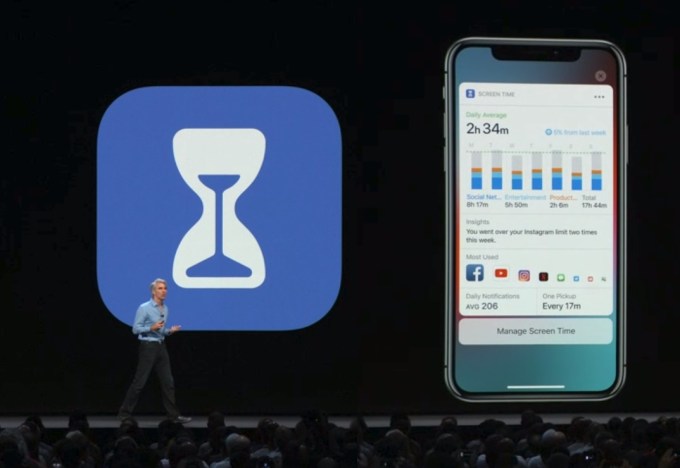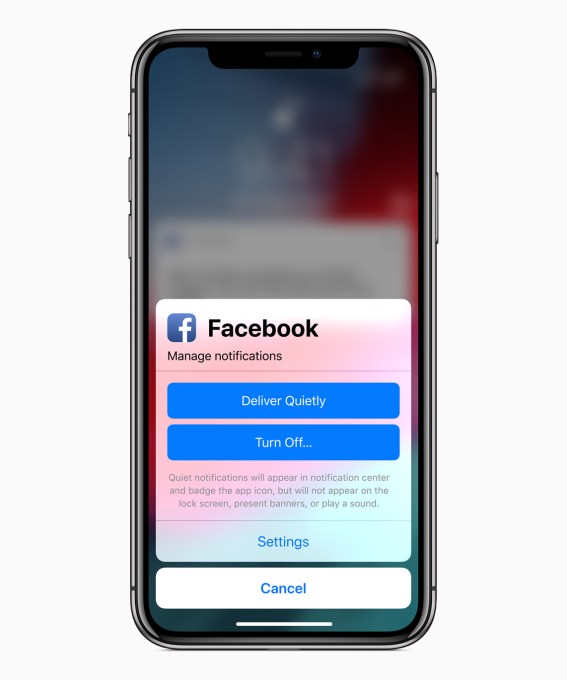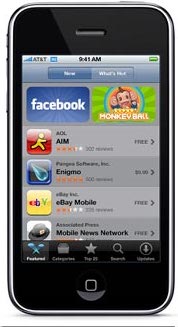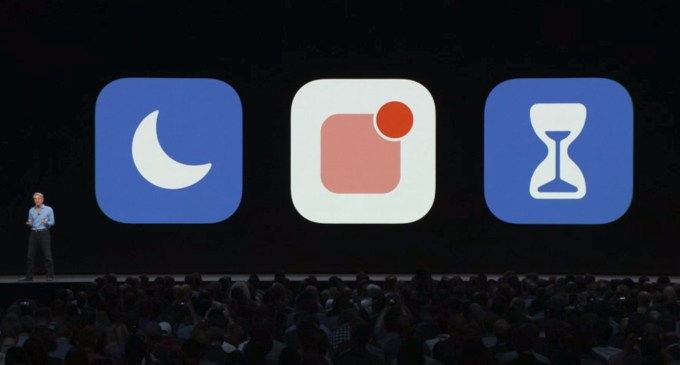Tim Cook thinks people should get off their iPhones and decrease their engagement with apps. The Apple CEO, speaking at the TIME 100 Summit today, was discussing the addictive nature of our mobile devices and Apple’s role in the matter when he made these comments. He said the company hadn’t intended for people to be constantly using their iPhones, and noted he himself has silenced his push notifications in recent months.
“Apple never wanted to maximize user time. We’ve never been about that,” Cook explained.
It’s certainly an interesting claim, given that Apple designed a platform that allowed app developers to constantly ping their users with the most inane notifications — from getting a new follower on a social app to a sale in a shopping app to a new level added to a game and so much more.
The very idea behind the notification platform, opt-in as it may be, is that developers should actively — and in real-time — try to capture users’ attention and redirect them back to their apps.
This is not how such an alert mechanism had to be designed.
An app notification platform could have instead been crafted to allow app developers to notify users in batches, at designed intervals within users’ control. For example, users could have specified that every day at noon they’d like to check in on the latest from their apps.

Or, in building out the iOS App Store, Apple could have implemented a “news feed” of sorts — somewhere users could opt to check in on all the latest news from their installed apps in a dedicated channel.
Or perhaps Apple could have structured a notification platform that would have allowed users to pick between different classes of notifications. Urgent messages — like alerts about a security breach — could have been a top-level tier; while general information could have been sent as a different type of notification. Users could have selected which types of alerts they wanted, depending on how important the app was to them.
 These are just a few of many possible iterations. A company like Apple could have easily come up with even more ideas.
These are just a few of many possible iterations. A company like Apple could have easily come up with even more ideas.
But the fact of the matter is that Apple’s notification platform was built with the idea of increasing engagement in mind. It’s disingenuous to say it was not.
At the very least, Apple could admit that it was a different era back then, and didn’t realize the potential damage to our collective psyche that a continually buzzing iPhone would cause. It could point out how it’s now working to fix this problem by putting users back in control, and how it plans to do more in the future.
Instead, it created a situation where users had to turn to the only defense left to them: switching off push notifications entirely. Today, when users install new apps they often say “No” to push notifications. And with Apple’s new tools to control notifications, users are now actively triaging which apps can get in touch.
In fact, that’s what Tim Cook says he did, too.
“If you guys aren’t doing this — if you have an iPhone and you’re not doing it, I would encourage you to really do this — monitor these [push notifications],” the CEO suggested to the audience.
“What it what has done for me personally is I’ve gone in and gutted the number of notifications,” Cook said. “Because I asked myself: do I really need to be getting thousands of notifications a day? It’s not something that is adding value to my life, or is making me a better person. And so I went in and chopped that.”
Yep. Even Apple’s CEO is done with all the spammy and noisy iPhone apps.
The comment, of course, was supposed to be a veiled reference to the addictive nature of some apps — social media apps in particular, and especially Facebook. Today, Apple throws barbs at Facebook any time it can, now that the company has fallen out of public favor due to its ongoing data privacy violations and constant scandals.
But a more truthful telling of the iPhone’s past would recall that Facebook’s app — and all its many notifications — was originally a big selling point for Apple’s mobile device.
When the App Store first launched in 2008, Facebook proudly sat in the top row in a featured position. It was heavily promoted to users because it was a prime example of the iPhone’s utility: here was this popular social network you could now get to right from your phone. Amazing!
The fact that Facebook — and every other app — later leveraged the iOS push notification platform to better its own business without regard to how that would impact users, isn’t entirely app developers’ collective fault. The notification platform itself had left the door wide open for that sort of psychological abuse, simply due to its lack of user-configured, user-friendly controls.

A decade after the App Store launched, Apple finally started to dial back on the free-for-all on user attention.
It announced its suite of digital wellness tools at WWDC 2018, which included Screen Time (a dashboard for tracking and limiting usage); increased parental controls; and finally a way to silence the barrage of notifications, without having to dig around in iOS Settings.
Now Tim Cook wants to have us believe that Apple had never wanted to cause any of this addiction and distraction.
But isn’t it telling that the exec has had to silence his own iPhone using these new tools? Isn’t that something of an admission of culpability here?

“Every time you pick up your phone, it means you’re taking your eyes off whoever you’re dealing with are talking with, right?,” Cook continued. “And if you’re if you’re looking at your phone more than you’re looking at somebody else’s eyes, you’re doing the wrong thing,” he said. “We want to educate people on what they’re doing. This thing will improve through time, just like everything else that we do. We’ll innovate there as we do in other areas.”
“But basically, we don’t want people using their phones all the time. This has never been an objective for us,” said Cook.
Except, of course, for those 10 years when it was.

0 comments :
Post a Comment